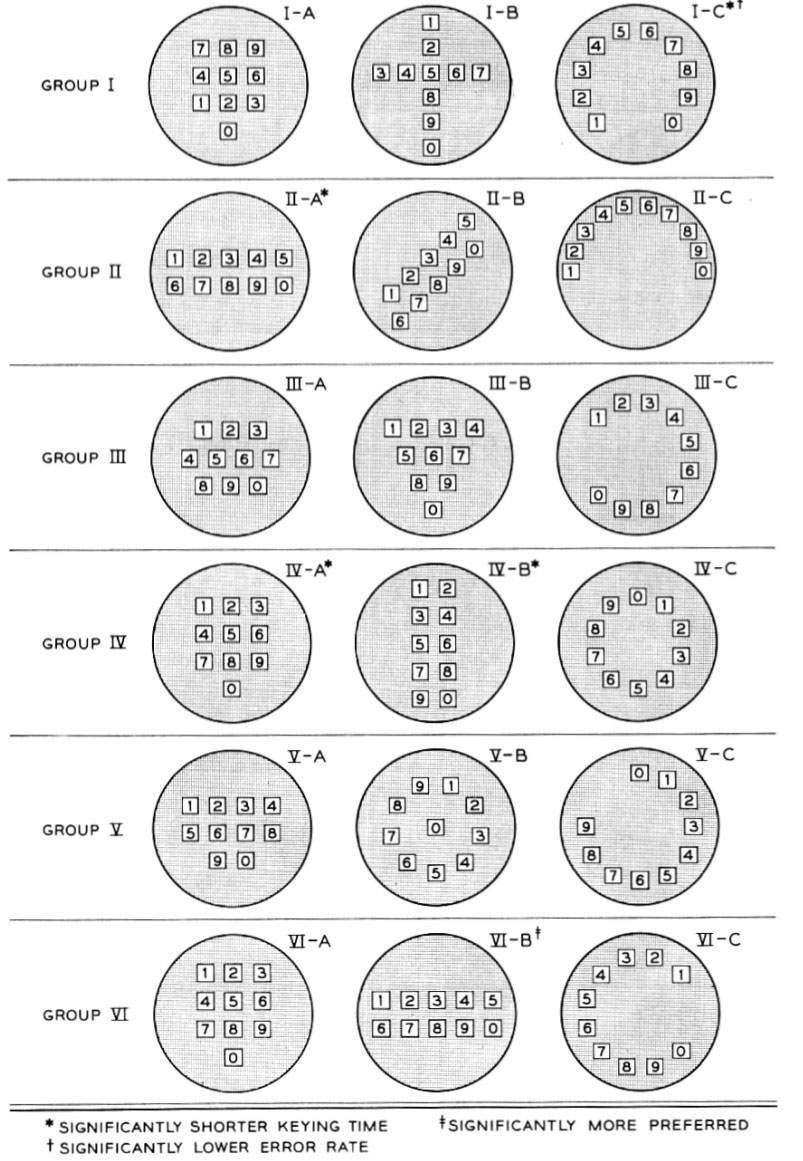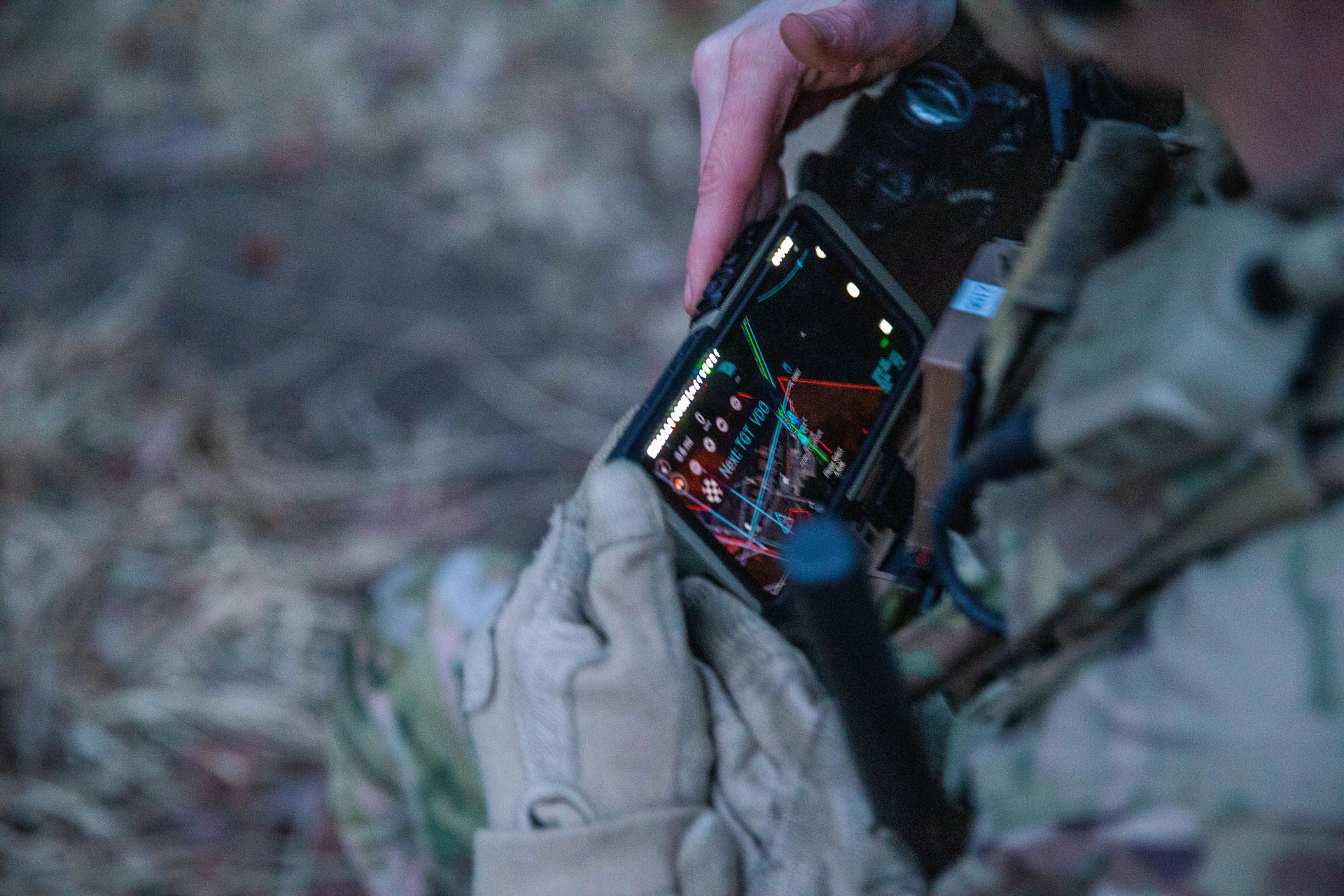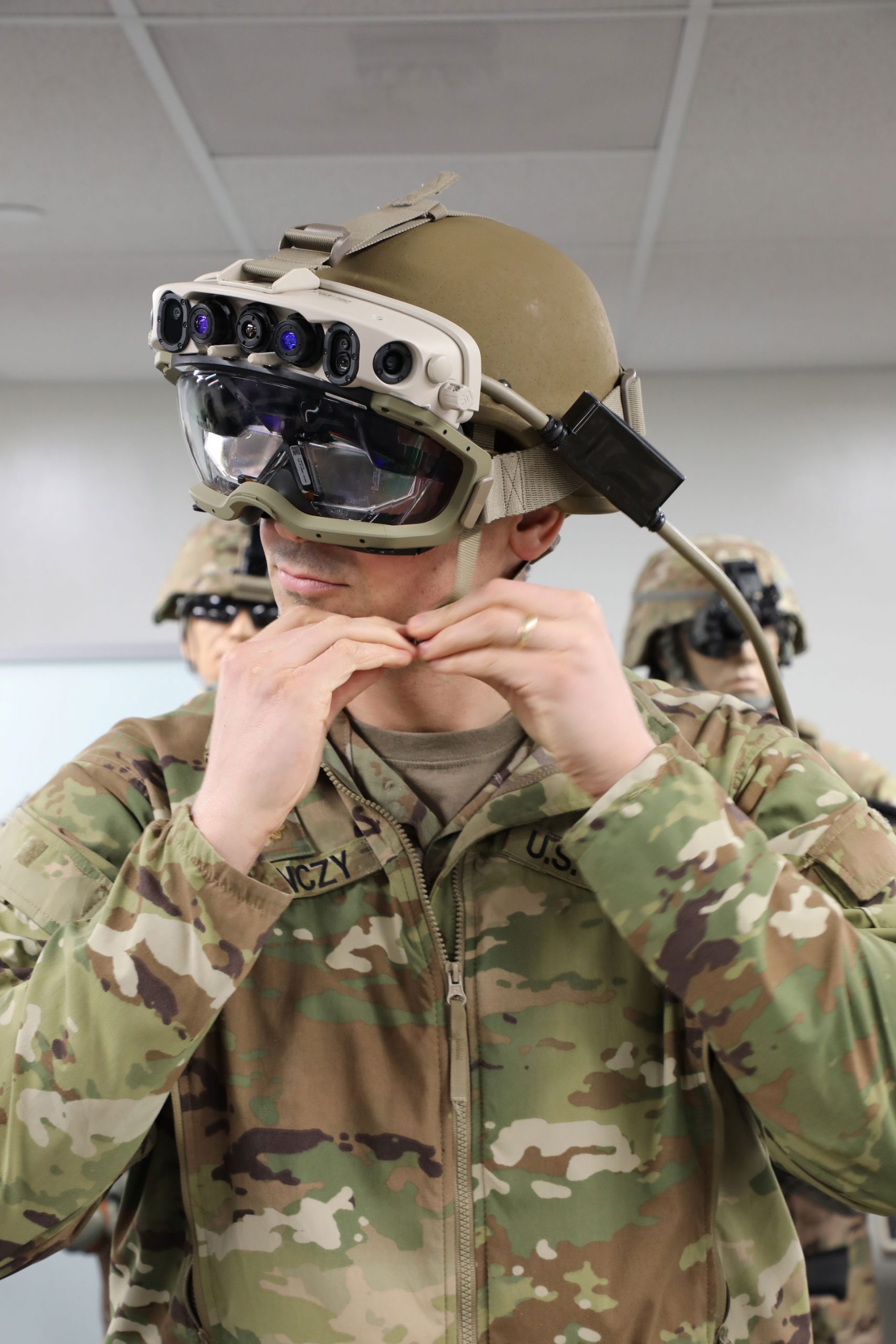
A TRADITION OF INNOVATION: The Army has fostered a culture of innovation throughout its history, working with innovators like Bell Labs and other industry partners. Bell’s relay computer was used by both the Army and the Navy to perform complicated calculations about the projected path of an anti-aircraft shell. (Photo by Bell Telephone Magazine, Summer 1946)
Whether it’s called Soldier-centered design, user experience, human factors engineering or human systems integration, the Army is putting this science front and center.
by Ellen Summey
Sometimes you just get really, really lucky. That was the case for hiring officials at Bell Telephone Laboratories in 1945, when they hired industrial psychologist John E. Karlin. Now widely considered the father of human factors engineering, he was then a newly minted Ph.D. studying sound and communication for the U.S. military during the final months of World War II. Karlin found fertile ground for his innovative ideas about product design at Bell, where he founded and led the nation’s first human factors engineering department.
Rather than creating new products with the assumption that users would adapt to them as required, he and his team incorporated human capabilities and inclinations into the design of the products themselves. His most well-known project, the telephone touchpad, represents one of the earliest examples of human factors engineering—the now ubiquitous keypad’s enduring use and universal adoption prove that Karlin got it right. That, however, was not a matter of luck. It was cold, hard science.

HELLO, OPERATOR?: Bell Telephone Laboratories designed the modern telephone touchpad in the 1940 and ’50s, through scientific testing and analysis. The idea for the touchpad, which would go on to replace the older rotary dialing interface, was modeled on the handheld calculator. Designers measured user preference, error rates and dialing speed on a wide array of distinct keypad designs. In the end, the clear winner was the so-called “three-by-three plus one” design most users recognize today. (Graphic by The Bell System Technical Journal, July 1960)
WHAT’S IN A NAME?
This field of work—the science of researching user capabilities, preferences and inclinations—is having a bit of an identity crisis today. What used to be called human factors engineering (HFE) now goes by several different names, including user experience (UX) design, human systems integration (HSI), Soldier-centered design (SCD) and several other related terms. Where does HFE end and UX begin? Is SCD just a rebranded version of HSI? It’s hard to say. Though each distinct name invokes certain skill sets and areas of focus, their goals and methods have significant overlap among them. Think of these fields as siblings with different hobbies. They may function somewhat differently, but you can’t deny the family resemblance.
This collection of overlapping professions—the HSI family—centers on the research and design of a user’s interaction with a brand or product. Rather than luck, the profession emphasizes hands-on testing and direct observation to create optimal outcomes. Today, whether you are dialing a phone, buying a new iPad in the local Apple Store, or any of a litany of other interactions with user experience-focused organizations, someone has painstakingly researched, designed and tested every facet of your experience. When they haven’t, you notice—like the webpage that won’t load on your preferred browser, the directional signage that makes no sense or the phone menu that won’t let you speak to a real human, no matter how many numbers you try.
The language we use to talk about HSI varies widely across the Army and throughout private industry, and continues to change as practices and technologies change over time. According to Dr. Larry Shattuck, senior lecturer and director of the HSI program at the Naval Postgraduate School, the shifting terminology around the profession may have unintended consequences. “I think those are unfortunate ways of making people more confused,” he said. “We had HSI and now the Army’s working toward user-centered design or Soldier-centered design—which is kind of the same thing. But the DOD policies are written for HSI. When you talk about DODI [DOD Instruction] 5000.02 and other DAU [Defense Acquisition University] documentation, they all talk about HSI.” He said that the changes were undoubtedly made with good intentions, and likely because of the rising popularity of UX design, but may unintentionally create confusion or render policies and guidance less effective.

WISE DECISION: A Soldier from the 101st Airborne Division checks his Nett Warrior device during a full mission test event at a Soldier touchpoint at Aberdeen Proving Ground, Maryland, in February 2021. Touchpoints are tremendously useful and wise, when it comes to building stuff for Soldiers, Maj. David Picard said. (Photo by Justin Sweet, PEO Soldier)
LET’S TALK TOUCHPOINTS
HSI is used widely throughout the Army acquisition enterprise, though it is now commonly called Soldier-centered design within the service. And, as it does with so many things, the Army has created its own name for the hands-on testing-and-observation events that are the hallmarks of every professional field in the HSI family—it calls them Soldier touchpoints. Over the last few years, acquisition professionals across the Army have been using Soldier touchpoints throughout the development of both hardware and software, and they say it has definite benefits.
Cory Baron is the product director for Combat Terrain Information System at the Army Geospatial Center. He and his team have participated in large-scale user events like the Joint Warfighting Assessment 2019 at Yakima Training Center, Washington, to do formal user testing and observation on the ENFIRE tool suite, which is designed to streamline the gathering and processing of map information. “We did an appliqué [add-on] integration into the Stryker vehicle,” he said. The tool suite was connected to sensors on the Stryker to ingest and aggregate information about the terrain, essentially doing the job of a team of scouts. “It was sort of ‘smoke testing’ to get an idea of how interacting with the tools did or did not save time or optimize task completion for Soldiers,” he said.
“It’s a huge benefit to make sure you have that feedback built into the loop,” said Maj. Reginald Bennett, with the U.S. Army Cyber Center of Excellence at Fort Gordon, Georgia. Bennett attended a recent test event at Aberdeen Proving Ground, Maryland, where he observed Soldiers testing the Dismounted Assured PNT System (DAPS) device. “DAPS is a GPS-type device that works with the Nett Warrior ensemble. It’s everything a Soldier would need to have assured PNT in a PNT-contested environment.” Bennett said that being able to observe Soldiers directly using the device was key to understanding any challenges or successes they had with the product. “We got a lot of really, really useful feedback. Getting that information early, before the Army starts making massive purchases, is a big deal.” Maj. David Picard, assistant program manager for DAPS at the Program Executive Office for Intelligence, Electronic Warfare and Sensors (PEO IEW&S), agreed with Bennett. “I think that’s tremendously useful and tremendously wise, when it comes to building stuff for Soldiers.”
THE MAIN SQUEEZE OF UX
Don Norman first used the term “user experience” (UX) design in the 1990s to describe the work he and his team were doing at Apple Computer. Norman had previously worked at Bell Communications Research, in a spinoff of Karlin’s original human factors engineering department. He recognized that the field had shifted its focus and techniques since the 1940s, and he coined the new term to reflect that change. UX has surged in popularity and is now commonly used in industry, but it is often conflated with user interface (UI) design, which is actually a subset of UX.

(Graphic by USAASC)
Everyone can relate to this example—putting ketchup from a new, glass bottle on your fries used to be a somewhat nerve-wracking ordeal. How quickly would it come out of the bottle? How many times should you whack the side? Or is it the bottom? Should the bottle be at an angle? Straight up and down? No one would argue that the old glass bottles weren’t attractive, but the new squeeze bottles created a drastic improvement to the user experience.
The user interface design centers on how a product will look and function, but the user experience design goes much further to encompass the problem that the product should solve for the user, how the product will be acquired and how it will be integrated into the user’s life.
TRAINING MATTERS
Dr. Pam Savage-Knepshield is a research psychologist with the U.S. Army Combat Capabilities Development Command (DEVCOM) Data Analysis Center (DAC). She leads the human factors engineering and HSI efforts at the Program Executive Office for Command, Control and Communications – Tactical, and she said it’s vitally important for HSI practitioners to have adequate training in the field.
DEVCOM Data Analysis Center’s “human systems integration workforce possesses the expertise to design and conduct [Soldier touchpoints] as well as collect, analyze and report results,” she said. Their skills include experimental design, human performance measurement, statistical analysis, and knowledge of user-interface and system-design principles for the specific domains in which they work. But that specialized knowledge is not available everywhere. “Even though there is greater emphasis on [Soldier touchpoints] across the Army, our experienced workforce is not always tapped for their expertise. Personnel without the necessary skills may be designing and conducting [Soldier touchpoints]—with mixed results.” Bennett put a fine point on the issue of mixed results, and the importance of careful and deliberate testing, saying, “If a mistake is made, potentially, the result is loss of life.”
Army leaders have prioritized HSI through policy and official guidance, but there is still room for improvement. Shattuck said the Naval Postgraduate School offers three exceptional HSI programs, including a four-course certificate and a full HSI master’s degree, but enrollment is down. “The reason this [HSI] program exists is due almost exclusively to the fact the Army wanted it,” he said. There was strong participation in the first two cohorts, but Shattuck said attendance declined steeply after that because of a lack of funding. “It wasn’t a lack of interest in the program, or issues with quality or anything like that. Every year, we hear from people who want to enroll, but their [organizations] don’t have money in the training budget to pay the tuition.”
Shattuck said that, whether practitioners are educated by NPS, Defense Acquisition University or any other entity, the most important thing is for the Army to formally implement training standards for the profession. We need “some sort of certification that says, ‘This individual is qualified to do HSI,’ and right now, that doesn’t exist,” he said. “No one would hire a systems engineer to do systems engineering on a program with just a sociology degree. That doesn’t make sense. But we’re willing to hire HSI people that have an electrical engineering degree or something like that. It doesn’t make them bad people, it just makes them the wrong person for that job.”

TOUCHING BASE: A Soldier dons the Integrated Visual Augmentation System Capability Set 3 at the Soldier Integration Facility at Fort Belvoir, Virginia, in January 2021. Getting feedback from a touchpoint like this one is key for equipment design. (Photo by Courtney Bacon, PEO Soldier)
GETTING IT RIGHT
Shattuck said he sees a clear path to success for HSI within DOD and it involves six specific focus areas: funding, staffing, policy, certification standards, career paths and training. “If you put those things together, you’d have an incredible, knowledgeable, trained, professional workforce to really make a difference—whether you call it SCD or HSI—that would result in a much better product for the warfighter,” he said.
According to Shattuck, program managers often do not set aside sufficient budgets to incorporate HSI into the acquisition process. “If the program manager doesn’t think that HSI or SCD is important enough, he or she doesn’t throw money at it, and therefore nothing gets done. There’s no forcing function to give money for an HSI practitioner.”
That results in a sort of funding-relevance death spiral for HSI professionals in the Army, he said. Without the money, they don’t have enough work, and without the work, they aren’t able to demonstrate their relevance to the program manager. “The program manager needs to have a long view of the program. This program’s going to be around—in the case of a new Bradley fighting vehicle replacement or the new Future Vertical Lift helicopter system—it’s not just for the five or six years that it’s being built, but for the 30 years that program’s going to be around. Wouldn’t it make sense to invest in the HSI activities that are going to result in safety and longevity and health and force protection and training and all those kinds of things, for the overall health of the system?”
In addition to more funding, Shattuck said there is a shortage of personnel. “When it comes to acquisition professionals and engineers and logisticians and those folks, they get assigned to a program and they work on that program and it’s typically one program. But for an HSI practitioner, particularly if it’s an ACAT [acquisition category] III or ACAT II program, they may be split between three or four or more programs that they’re supposed to cover.” With such limited time and attention, Shattuck said it is even more challenging for those HSI professionals to make much of an impact on a program. “There are absolutely not enough HSI practitioners to go around, to be in the trenches, with all the people doing all the other acquisition and design and sharing work, preparing for milestone decisions and all that sort of stuff.”
One reason for the shortage: There is no clearly defined career path or job series for HSI in the Army. “If you’re trying to hire someone with an HSI background or an HSI degree, there’s no job series you can go to.” Shattuck explained. “The closest you get is an engineering psychologist, which is not the same thing, or just a psychologist or a general engineer. None of those come with the knowledge, skills and abilities that somebody with an HSI degree has. We don’t have the ability to hire them and there’s not a career path, either in the military at the O-3 to O-6 level, or in the civilian world at GS-7/9 up to GS-15.” Creating an appropriate job series and a relevant career path would be an important step to help identify, manage and track people with HSI expertise, he said.
POLICY IN PRACTICE
Army Regulation 602-2, “Human Systems Integration in the System Acquisition Process,” provides a comprehensive look at the branch’s approach to HSI.
“The Army’s HSI Program focuses on the integration of human considerations into the system acquisition process to enhance Soldier-system design, reduce life cycle ownership costs, improve safety and survivability, and optimize total system performance. HSI accomplishes this by ensuring that the human is fully and continuously considered as part of the total system in the development and/or acquisition of all systems. Human performance is a key factor in total system performance, and enhancements to human performance will contribute to enhanced total system performance and could help reduce life cycle ownership costs. It is imperative that a total HSI effort begins as early as possible in system acquisition and that user feedback is used to maximize the influence on system design.”

FIRING ON ALL CYLINDERS: For the Army and DOD to make efficient and judicious use of HSI, Shattuck has identified six strategic key requirements. (Graphic by USAASC and Dr. Larry Shattuck)
CONCLUSION
Progress is being made. There are numerous examples of the growing role and recognition of HSI, UX and the entire group of related fields within the Army and DOD. Look at the training being provided by the Navy’s Centers for Adaptive Warfighting, the innovative work of the General Services Administration’s 18F office, or the creation of the Air Force Chief Experience Officer position. This isn’t your grandfather’s military anymore.
The Army has a long history of embracing and fostering innovation, working with industry leaders like John Karlin and Bell Labs to achieve its mission. Today, it is on the edge of another major advancement with the broad adoption of HSI practices, but Shattuck said it’s going to require strong leadership. “What would it look like if the senior leaders of AFC [Army Futures Command] stood up and said, ‘HSI is important to me, we will do HSI in every program, you will brief me about it every time there is a milestone decision, I want to hear and see what the status of HSI is,’ ?” he said.
When it comes to accomplishing its goals—from dominating the battlefield to supplying Soldiers with the best equipment and technology—the Army champions innovative thinking and strong leadership. It doesn’t just hope for a lucky break.
For more information about HSI policy, go to https://ac.cto.mil/hsi/. To learn about the HSI programs at NPS, go to: https://nps.edu/web/or.
ELLEN SUMMEY provides contract support to the U. S. Army Acquisition Support Center at Fort Belvoir, Virginia, as a writer and editor for SAIC. She holds an M.A. in human relations from the University of Oklahoma and a B.A. in mass communication from Louisiana State University. She is certified as a User Experience Manager and Project Management Professional, and has more than 15 years of professional communication experience.







